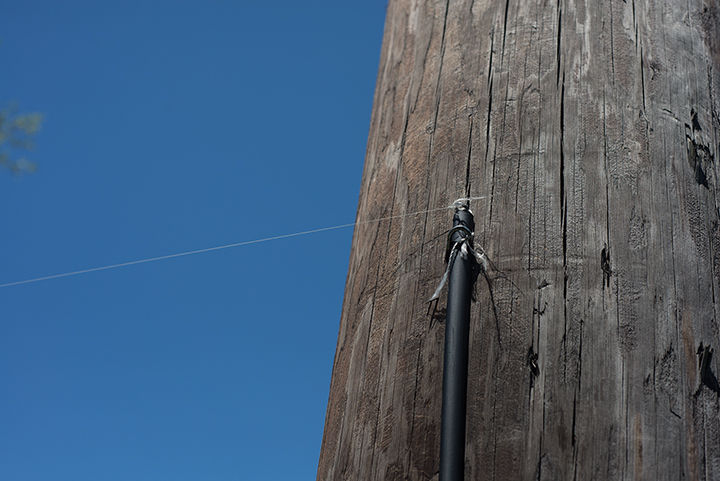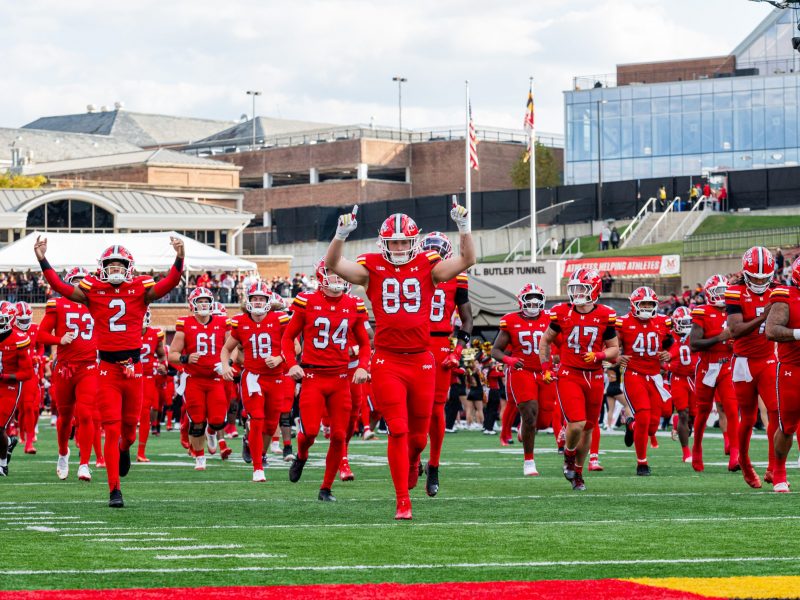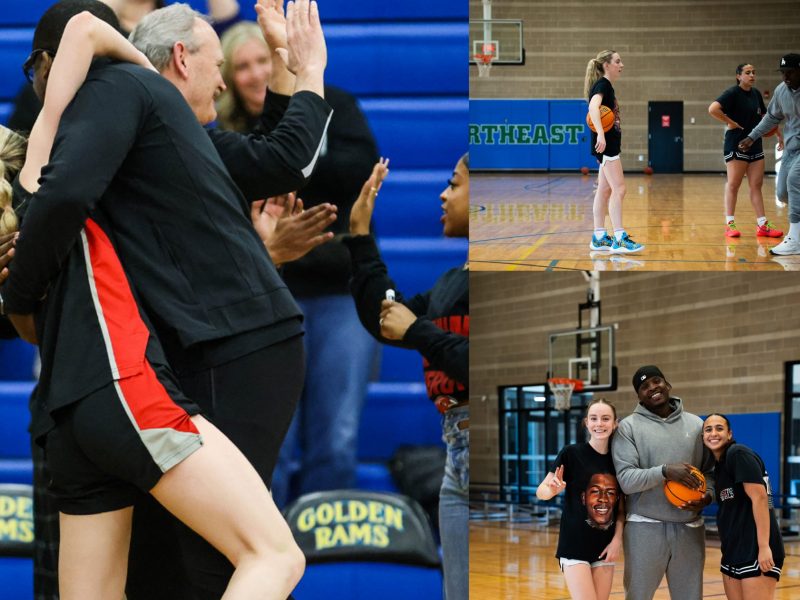
A fishing line suspends from a pole near Adelphi Road that is used to maintain the Eruv area on the campus.
There’s a wall surrounding the University of Maryland campus, and even though it can’t be seen, five students are making sure it stays there.
The Eruv Committee from Kedma, the university’s Orthodox Jewish community, helps maintain this university’s eruv, a “metaphysical wall” that helps make Orthodox Jews’ lives easier, Kedma President Shimon Epstein said.
An eruv is an area surrounded by a boundary often made of wire or string that allows Jews to perform activities normally forbidden outside of the home on the Sabbath.
“When you make a wall, you are kind of making the entirety of campus like a private domain,” said Epstein, a junior economics and mathematics major. “So it’s like you’re walking in a gigantic house.”
Those observing the Jewish holy day of rest, held from Friday night to Saturday night, might not do activities that would be considered work, from carrying keys to pushing a wheelchair.
However, the enclosed space of the eruv allows Jews to carry their children outside or perform other necessities still while observing the rules of Shabbat.
“Any form of carrying between public and private domains is forbidden on the Shabbath, and an eruv is a way of creating a single domain by which you would allow carrying within it of various things,” said Hillel’s Orthodox Rabbi Ari Neuman.
Every week, Kedma’s Eruv Committee spends an hour circling the outskirts of campus to ensure the eruv is still intact, driving from the Paint Branch Golf Course to parts of University Park and from University of Maryland University College to behind Fraternity Row.
The eruv is created by making open doorways around an area separating the public and private spaces, Neuman said. To create the doorways, Jewish law requires a string above two poles. Often telephone poles and wires act as these doors.
Last Friday afternoon, it was Epstein and Judah Eisenman’s turn to check that the eruv was intact for Shabbat. While Eisenman drove, Epstein carefully watched the telephone poles to make sure everything was still functioning, frequently leaving the car to check specific poles.
Some parts of the eruv do not have telephone poles and wire that meet the requirements of the Jewish law.
To make up for it, committee members tie fishing wire between poles to make their own doorway. And at the corner of Paint Branch Avenue and University Boulevard, a fishing wire has been tied since the eruv was built in 2004.
The job gets repetitive, Eisenman said, but there is a great sense of duty to it.
“The people who do it now are the people who are going to be doing it in 40 years for what you may say, a real community,” said Eisenman, a freshman classical languages and literatures major. “Might as well start now.”
The committee must check the eruv in the rain and snow, and Epstein said they even checked it after Hurricane Sandy in 2012, as the Orthodox community depends on them.
“It’s an important thing to get done,” Epstein said. “Somebody has to do it, and I’m willing to be that person for at least a couple more months.”
Last week, Eisenman said, a string near the Graduate Hills apartments fell and they had to tie it again, which took about 30 minutes.
After committee members complete their duties, they change the eruv sign at Hillel by sticking the word “up” at the top of the sign, so it reads, “The eruv is Up this week.”
Keeping the eruv maintained weekly might seem like a small task, Neuman said, but it’s an integral part of any Orthodox community.
“Unfortunately, this is one area of Jewish law that people take for granted,” Neuman said. “Very often they are not even aware of how much they rely on this group of students and what they are doing. It’s a thankless job, to be honest.”



